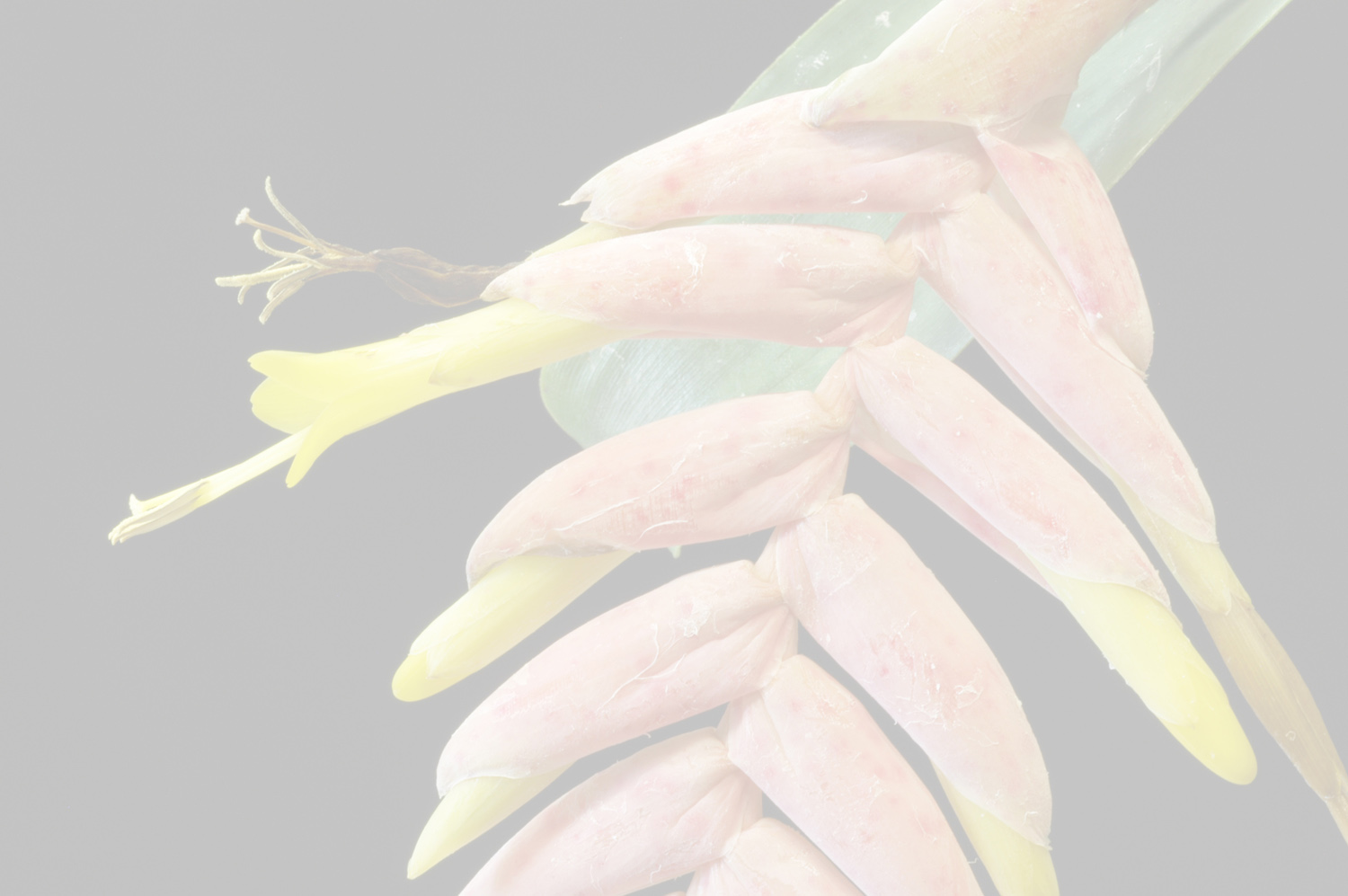Vriesea platzmannii E.Morren
Literature references:
*move your mouse pointer over the page numbers to see comment
Comments:
- From Bromelia Sept 1996 by J R Grant
ABSTRACT
Due to taxonomic and nomenclatural confusion, original material of two morphologically-similar species, Vriesea platzmannii E. Morren and Vriesea lancifolia (Baker) L. B. Smith has been confused. In order to clarify the matter, authentic material of each species was verified.
INTRODUCTION
When Morren (1875) described Vriesea platzmannii, he unknowingly based the name on discordant elements that represented two morphologically similar species. The plate published with the text represents one element from southern Brazil, while the cited herbarium material was of a second from northeastern Brazil. Baker (1889) described the latter element as Tillandsia lancifolia, typifying the name on a duplicate (Blanchet 3458) of one of the numbers cited by Morren in his protologue of Vriesea platzmannii. Baker (1889) recognized Vriesea platzmannii as a distinct species, citing the original plate, but none of its originally-cited herbarium specimens. Mez (1894) reduced Tillandsia lancifolia into synonymy under Vriesea platzmannii apparently following Morren's assertion that the material represented a single species. Initially Mez ( 1896) followed this line of reasoning but later (Mez 1935) considered the name to be represented only by Vriesea platzmannii, regarding Vriesea platzmannii as being based on the herbarium material alone, specifically excluding the original plate. Smith (1941) rejected Mez's treatment of the taxa, and returned to the taxonomy of Baker ( 1889), whereby the original plate of Vriesea platzmannii was recognized as its type, and Blanchet 3458 as the type of Vriesea lancifolia. Smith & Downs ( 1977) followed both Baker ( 1889) and Smith (1941 ), and recognized both Vriesea platzmannii and Vriesea lancifolia as distinct taxa. Each taxon is also recognized as distinct in this treatment.
Vriesea platzmannii
Edouard Morren ( 1875) proposed Vriesea platzmannii based on material from Brazil. But since it was not customary at the time to designate a specific herbarium specimen or illustration to represent the species, a lectotype later needed to be chosen from the original material to typify the name. Baker (1888) presented a conservative classification of the subfamily Tillandsioideae and transferred Vriesea platzmannii to Tillandsia. It may be inferred that Baker (1888) or Baker (1889) selected the Platzmann plate as lectotype, but since the "type concept" was not yet in place, and Baker didn't use the word "type" in either place, that assertion can not be made. Mez (1894, 1896 & 1935) recognized Vriesea platzmannii, but did not designate type specimens. Smith ( 1941: 409-410) however, selected the original Platzmann plate as the lectotype of Vriesea platzmannii, insuring that Blanchet 3458 would remain the type of Vriesea lancifolia.
Although herbarium specimens were also cited in the original protologue of Vriesea platzmannii, all belong to Vriesea lancifolia. The only element of the original material that can be definitively attributed to Vriesea platzmannii as circumscribed by modern authors is the illustration. While Vriesea platzmannii occurs in southern Brazil (Parana, Santa Catarina, and Rio Grande do Sul), Vriesea lancifolia is restricted to a few localities in northeastern Brazil (Bahia).
The original material of Vriesea platzmannii consisted of a watercolor illustration that was published with the original description, and several herbarium specimens. Julius Platzmann of Leipzig illustrated numerous plants between 1858-1864 on the Ilha das Pecas, Baia de Paranagua, state of Parana, Brazil. One was of a new species described by Morren and named to honor Platzmann. This illustration was published as plate 23 in the original publication. Of the cited herbarium material, there was Blanchet 3458 [Herb. Candoll. (G-DC)], Blanchet 345(8) [Herb. Martii (BR)], and Claussen? (LE). Mez (1894) stated that the known material of Vriesea platzmannii included the Platzmann plate and duplicates of Blanchet 3458 at Berol. (B), Boiss.-Barbey (G), Brux. (BR), Candoll. (G-DC), Petrop. (LE), and Vindob. (W), to which Mez (1896) added Mus. Brit. (BM), and Hal. (HAL).
Smith & Downs ( 1977) stated that the type of Vriesea platzmannii was "Platzmann Icon [holotype LZ, n v (not verified)] Ilha das Pecas, Parana, Brazil, 1859". While at some point there was an original Platzmann illustration, it has become misplaced, lost or destroyed. Its reproduction in the original publication of Vriesea platzmannii is the lectotype selected by Smith ( 1941 ). The original is not at the Leipzig herbarium as suggested by Smith ( 1977), which was largely destroyed during World War II. Dr. Peter Otto has verified (pers. comm. ) that no specimens or plates of Julius Platzmann are in either the Leipzig Herbarium or the scientific libraries of Leipzig.
VRIESEA LANCIFOLIA
Baker (1889) proposed Tillandsia lancifolia based on a single herbarium collection at the
British Museum, Blanchet 3458. Since it is a single element, it is automatically recognized as the holotype ( Art. 9.1, Greuter et al. 1994). Mez (1894) reduced this taxon to synonymy under Vriesea platzmannii without comment.
Weber (1982) described Vriesea lancifolia as one of the "lost bromeliads" since it had not been collected since its original material was found in 1841. Weber presented a brief history of the taxon, and listed the herbarium at Kiel, Germany, as an additional depository for a duplicate of Blanchet 3458. Weber challenged collectors to search for the species in hope that it would be rediscovered. Martinelli & Leme ( 1983) answered the call and reported its rediscovery from several different localities in Bahia, Brazil. They provided exact locality data, a color photo, and an expanded description. —See Smith & Downs 1977

